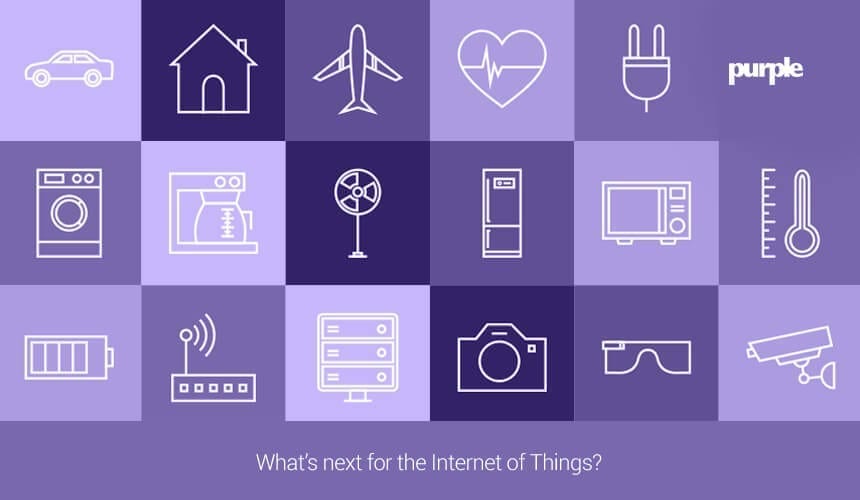“So why is it called the Internet of Things?” Was the question from my five year old when I told him what I was writing about –” it sounds awesome”. Maybe he’s been watching too much YouTube, maybe he’s right? It is pretty ‘awesome’, by giving objects, animals or people unique identifiers and the ability to transfer data over a network without requiring human interaction the opportunities for its use appear endless. It just needs a name that does it justice.
Maybe it will get a better name – maybe it will just become business as usual and exist in the background – as if it’s always been there. For now the Internet of Things is a big thing, and with shining examples of IoT popping up everywhere, it feels as though everyone is looking for ways to link their companies and products over the Internet.
But where it will go next? Here are five ideas I’ve found from across the internet.
- The IoT will improve travel
Whether it’s monitoring the performance of airline engines, enabling keyless entry to hotel rooms or helping tourists find their way around Disney World, IoT is creating exciting opportunities for the travel and hospitality industry.
By connecting smart devices, systems, processes and people in new ways, travel companies are streamlining the back-end operations of hotels, resorts, cruise lines and rental car fleets. And airlines are employing sensors to gather real-time information from aircraft parts and systems that are then used to track flight data, optimize fuel consumption and anticipate maintenance issues.
- The IoT will change the way we drive
Distracted driving is a problem, but the IoT may change that. Adding connected technology in the vehicle will make it less tempting to grab the phone, and connected vehicles are going to be the norm in the next five years. In fact, Gartner predicts one out of every five vehicles, or 250 million in total, will be connected vehicles by 2020.
This has the potential not just to limit distracted driving and make the driving experience more enjoyable, but it also may expand alternatives to car ownership, like car sharing in major urban areas. The connected technology would allow for multiple users and easier tracking of use.
- The IoT will change our lives at home
At the recent CES technology show in Las Vegas it was the Amazon Echo that stood out from its peers. The voice activated speaker can also control your lights and answers questions. Ford is just one brand that has unveiled a plan to tie its automotive software to Amazon Echo so that car owners can control their home lighting and other services while driving. Other businesses include home security companies Alarm.com and Vivint letting their users control their security systems by voice using Echo.
CES also saw the launch of Triby, a $200 kitchen radio that uses the Amazon Alexa voice services application programming interface to create an Amazon Echo-like device, except it’s linked to different services including music streaming service Spotify.
We are also seeing a subtle shift from building the device to designing services. A number of larger companies are showing off connected products. Procter & Gamble’s connected air freshener ties into a Nest Thermostat to spray air freshener at the optimal time to take advantage of your AC fans blowing air around your home. Whirlpool’s new connected kitchen suite includes an oven, fridge, and a washer and dryer that works with both Nest and IBM’s Watson to share information. Whirlpool also talked about partnering with Amazon on its Dash button to let customers automatically re-order laundry detergent from a connected washing machine when it estimates the laundry pods will have run out. Lowe’s, the hardware retailer, has taken its Iris DIY smart home hub and devices and connected them to a 24-7 monitored home security system that it sells. Under Armour, Medronic, and SoftBank are also working with IBM to integrate services from Watson as well.
- The IoT will make us healthier
The IoT has the power to improve the health of individuals by giving us the tools we need to live a healthier life. With fitness trackers, for instance, they help the wearer make better choices about active living, people can slowly but surely make changes that lead to a healthier lifestyle.
By adding the Internet of Things to the modern medical practice, healthcare practitioners have instant access to information about their patients. This improves the quality of medical care. It can also allow doctors to monitor patient vitals without weekly scheduled “maintenance” trips to the doctor’s office. So, when utilized in this way, the Internet of Things can make us healthier.
- The IoT will improve business
Imagine a grocery store that uses the Internet of Things to keep its freezers at the perfect temperature, no matter how many times the door is opened or how much is stocked inside? Cloud-based access control systems have IoT enabled hardware that allows these buildings systems to be integrated and managed from one single platform, improving your building management efficiencies while also enhancing your building security.
On the enterprise side, many businesses have the use and maintenance of their heating, ventilation and air conditioning (HVAC), security, plumbing, elevator and other facilities-related systems linked by the IoT.
And in manufacturing, the IoT allows for machine-to-machine communication, improving the final product of a plant without adding additional workforce to the floor.
It seems that the Internet of Things isn’t set to change one aspect of our lives at a time; the revolution that will transform our workplaces, homes, health, travel and leisure time has already been set in motion. It’s here, right now, and it’s only a matter time before the technology we know today becomes even smarter.
